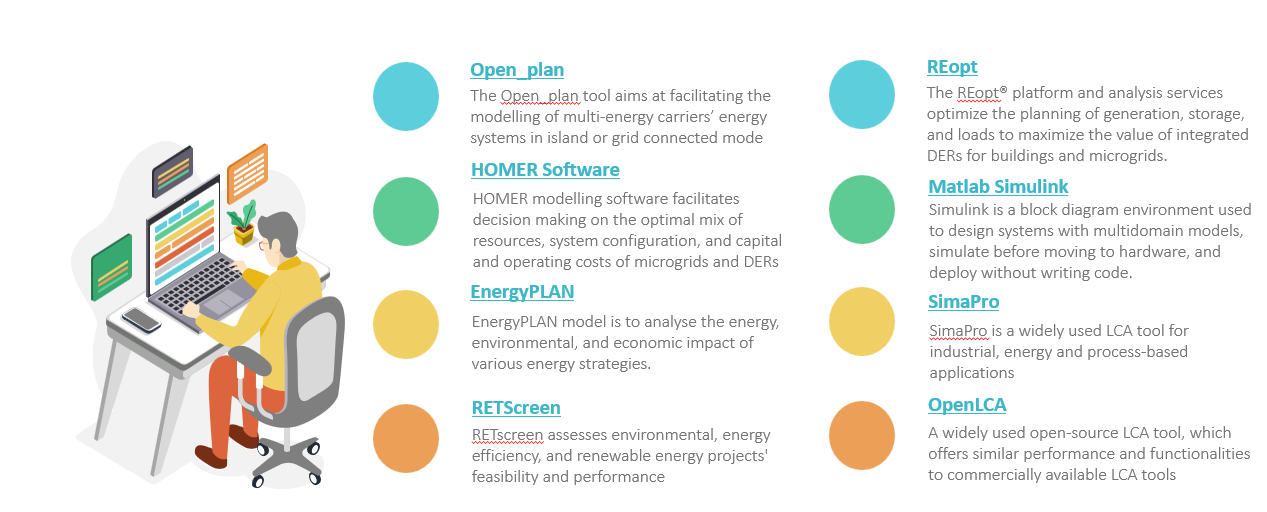Simulation Tools
Since ROBINSON may be implemented in an already operating infrastructure, thus already energy and economic resources consuming, it is of high importance the results of modelling to be as accurate as possible. This to convince any prospective adopters of the ROBINSON concept for its efficiency, both in terms of the obvious environmental profits (by harnessing RES potential) and in the accompanying economic terms, since in the long run such an adaptation may be profitable if properly implemented.
Technological components for evaluation are the combined heat and power unit, the steam boiler, the wind turbine, the electrolyser, the AD-BES system, the gasifier, the gas fuel mixer, the PV systems, and the energy storage systems which will be modelled using several tools. The most critical tools are as follows:
The Open_plan tool aims at facilitating the modelling of multi-energy carriers’ energy systems in island or grid connected mode
HOMER modelling software facilitates decision making on the optimal mix of resources, system configuration, and capital and operating costs of microgrids and DERs
EnergyPLAN model is to analyse the energy, environmental, and economic impact of various energy strategies.
RETscreen assesses environmental, energy efficiency, and renewable energy projects' feasibility and performance
The REopt® platform and analysis services optimize the planning of generation, storage, and loads to maximize the value of integrated DERs for buildings and microgrids.
Simulink is a block diagram environment used to design systems with multidomain models, simulate before moving to hardware, and deploy without writing code.
SimaPro is a widely used LCA tool for industrial, energy and process-based applications
A widely used open-source LCA tool, which offers similar performance and functionalities to commercially available LCA tools

